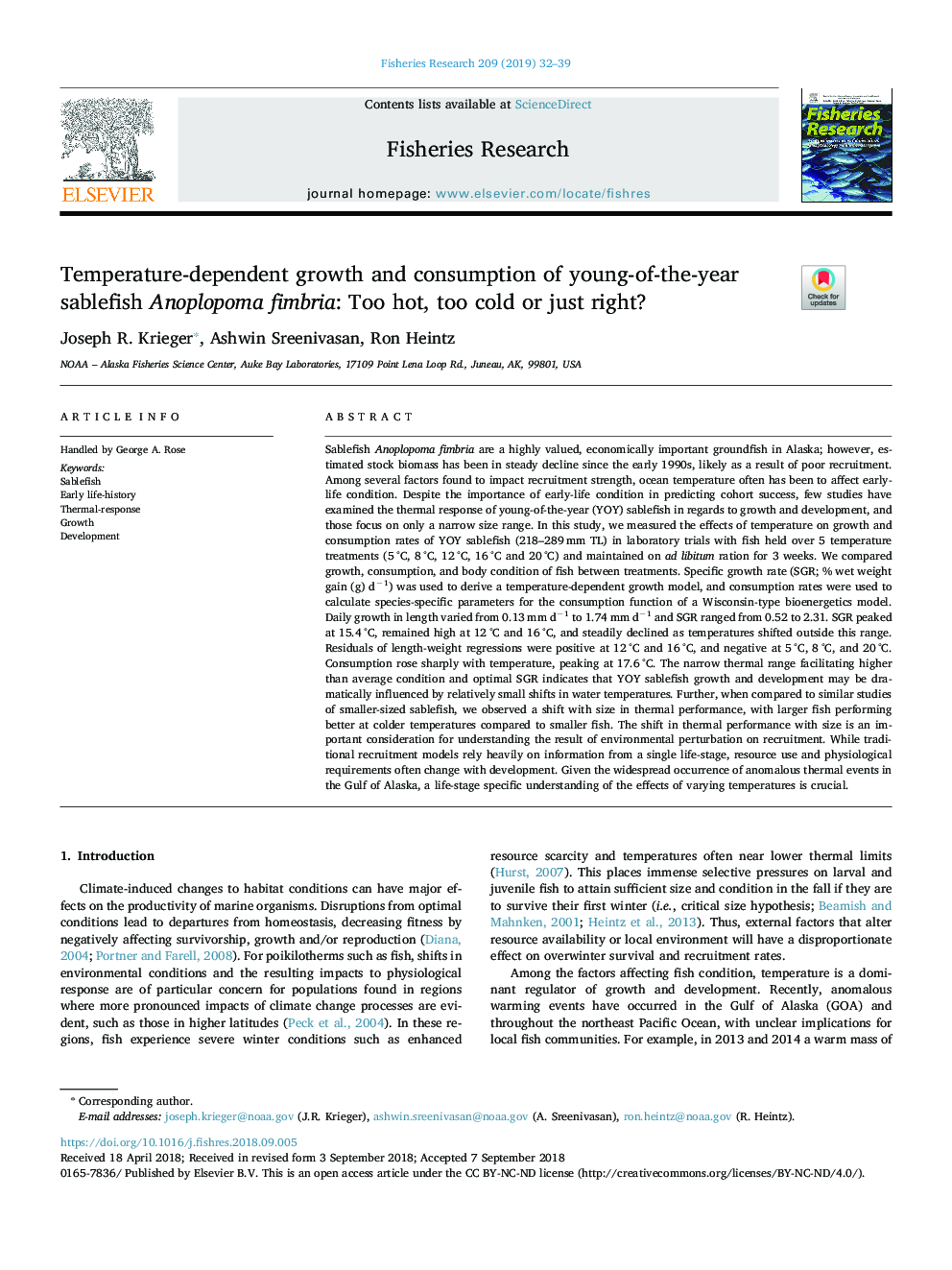| کد مقاله | کد نشریه | سال انتشار | مقاله انگلیسی | نسخه تمام متن |
|---|---|---|---|---|
| 10223855 | 1701060 | 2019 | 8 صفحه PDF | دانلود رایگان |
عنوان انگلیسی مقاله ISI
Temperature-dependent growth and consumption of young-of-the-year sablefish Anoplopoma fimbria: Too hot, too cold or just right?
ترجمه فارسی عنوان
رشد و مصرف وابسته به دما وابسته به آنفلوپوما فیمبریا: خیلی گرم، خیلی سرد و یا درست است؟
دانلود مقاله + سفارش ترجمه
دانلود مقاله ISI انگلیسی
رایگان برای ایرانیان
کلمات کلیدی
موضوعات مرتبط
علوم زیستی و بیوفناوری
علوم کشاورزی و بیولوژیک
علوم آبزیان
چکیده انگلیسی
Sablefish Anoplopoma fimbria are a highly valued, economically important groundfish in Alaska; however, estimated stock biomass has been in steady decline since the early 1990s, likely as a result of poor recruitment. Among several factors found to impact recruitment strength, ocean temperature often has been to affect early-life condition. Despite the importance of early-life condition in predicting cohort success, few studies have examined the thermal response of young-of-the-year (YOY) sablefish in regards to growth and development, and those focus on only a narrow size range. In this study, we measured the effects of temperature on growth and consumption rates of YOY sablefish (218-289âmm TL) in laboratory trials with fish held over 5 temperature treatments (5â°C, 8â°C, 12â°C, 16â°C and 20â°C) and maintained on ad libitum ration for 3 weeks. We compared growth, consumption, and body condition of fish between treatments. Specific growth rate (SGR; % wet weight gain (g) dâ1) was used to derive a temperature-dependent growth model, and consumption rates were used to calculate species-specific parameters for the consumption function of a Wisconsin-type bioenergetics model. Daily growth in length varied from 0.13âmm dâ1 to 1.74âmm dâ1 and SGR ranged from 0.52 to 2.31. SGR peaked at 15.4â°C, remained high at 12â°C and 16â°C, and steadily declined as temperatures shifted outside this range. Residuals of length-weight regressions were positive at 12â°C and 16â°C, and negative at 5â°C, 8â°C, and 20â°C. Consumption rose sharply with temperature, peaking at 17.6â°C. The narrow thermal range facilitating higher than average condition and optimal SGR indicates that YOY sablefish growth and development may be dramatically influenced by relatively small shifts in water temperatures. Further, when compared to similar studies of smaller-sized sablefish, we observed a shift with size in thermal performance, with larger fish performing better at colder temperatures compared to smaller fish. The shift in thermal performance with size is an important consideration for understanding the result of environmental perturbation on recruitment. While traditional recruitment models rely heavily on information from a single life-stage, resource use and physiological requirements often change with development. Given the widespread occurrence of anomalous thermal events in the Gulf of Alaska, a life-stage specific understanding of the effects of varying temperatures is crucial.
ناشر
Database: Elsevier - ScienceDirect (ساینس دایرکت)
Journal: Fisheries Research - Volume 209, January 2019, Pages 32-39
Journal: Fisheries Research - Volume 209, January 2019, Pages 32-39
نویسندگان
Joseph R. Krieger, Ashwin Sreenivasan, Ron Heintz,
